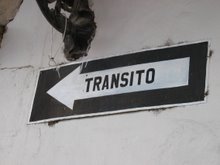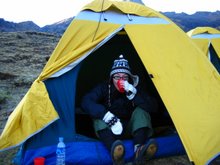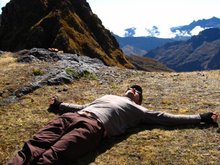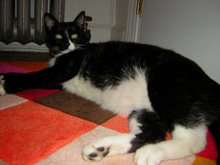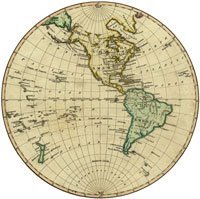Due to a road blockade, we spend a couple more days in La Paz than anticipated. We muster up all the warmth we can, before finally taking a bus to Oruro where we can catch the night train, Wara Wara del Sur, to Uyuni. We´d heard many stories about the "wind chill factor" in Uyuni and Jen is particularly unsettled about the whole thing....
Uyuni is a crazy train town. It´s the hub for passage not only to north and south Bolivia, but also onward to Chile. That said...there´s not much else going on. It really resembles a very very cold and dusty ghost town straight out of a Leone western, only instead of tumbleweeds, there are plastic bags flying across the horizon.
There´s not much to do here. What restaurants we can find sometimes won´t even serve us. Most people just use Uyuni as a base to visit La Salar (the world´s largest salt flat), and people in Uyuni aren´t particularly friendly to outsiders.
What they *DO* have is a great collection on old decaying steam engines and cargo trains on the edge of town called "El Cemetario de Trenes." It is frankly one of the loveliest things I´ve seen. Even through the paralyzingly cold winds, I was in heaven. We shot lots of super 8 film too, of course.
More to come on the Salt Flats. Oh my, we are so very behind.






